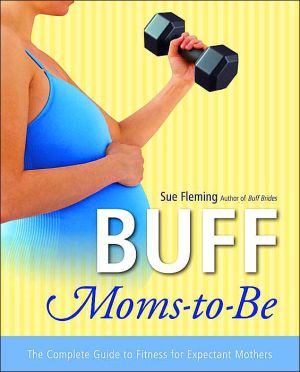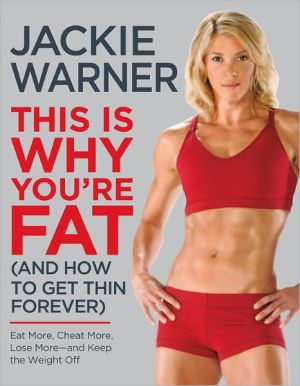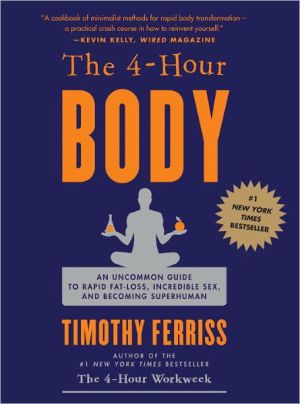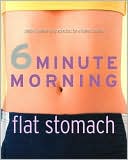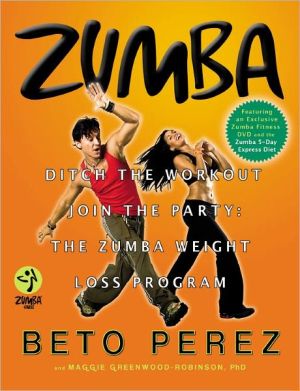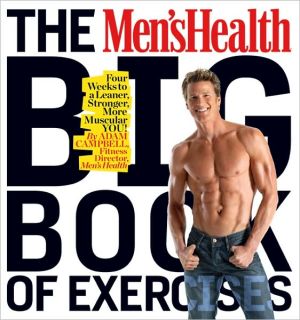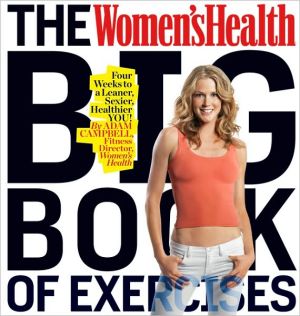Buff Moms-to-Be: The Complete Guide to Fitness for Expectant Mothers
Everything you need to know to safely stay in shape during your pregnancy\ Many expectant mothers experience dramatic weight gain during pregnancy, but the myth that they shouldn’t exercise is just that—a myth. The truth is, regular activity may improve women’s ability to cope with pain during labor and combat depression associated with the period just following childbirth. Now Sue Fleming, a longtime personal trainer and author of the highly successful Buff Brides, gives us a comprehensive...
Search in google:
Everything you need to know to safely stay in shape during your pregnancyMany expectant mothers experience dramatic weight gain during pregnancy, but the myth that they shouldn’t exercise is just that—a myth. The truth is, regular activity may improve women’s ability to cope with pain during labor and combat depression associated with the period just following childbirth. Now Sue Fleming, a longtime personal trainer and author of the highly successful Buff Brides, gives us a comprehensive guide for expectant mothers who want to remain healthy, strong, and fit. Buff Moms-to-Be shares effective exercises (approved by doctors) for ensuring an easier pregnancy, a smoother birth, and the fastest way back to that pre-baby body. Inside you’ll discover• simple strategies for starting an exercise program• what to expect from your changing body• safe aerobic exercises, stretches, and strength training for women at all levels of fitness and all stages of pregnancy• a complete workout and exercise regimen designed to ease labor and deliveryFully illustrated with photographs demonstrating poses and postures, Buff Moms-to-Be is like having your own personal trainer in the comfort of your own home. Sue Fleming’s supportive approach to fitness is the perfect aid to the health-savvy expectant mother—and a fun way to make sure you look and feel your best during one of the most joyful times in your life. Library Journal In this concise follow-up to Buff Brides, Fleming, a personal trainer with an M.S. in physical education, aims to help women overcome common fitness obstacles during the childbearing year. She presents a simple and flexible roster of exercises, none requiring special skills or prior conditioning, so most women should be able to follow them. All can be done in small living spaces and involve minimal cost and modest time investment. General guidelines on cardiovascular warmups and activities are provided along with specific instructions-accompanied by black-and-white photographs-for stretching and strength training. Three medical doctors introduce the book with a discussion of the special needs and risks associated with exercise during pregnancy. Fleming supplements that information with ample safety advice throughout. Curiously, the book's title, chosen to tie in with the author's previous work, belies this most gentle approach and may unnecessarily put off less athletically inclined women. There are also a few confusing mismatches between descriptions of the exercises and the accompanying photographs (for example, on page 77 the text advises holding two dumbbells in each hand; the photo shows only one in each hand of the model). For most public libraries.-Noemie Maxwell, King Cty. Lib. Syst., WA Copyright 2004 Reed Business Information.
CHAPTER 1\ Some Unique Considerations\ BUFF BENEFITS OF EXERCISE DURING THOSE LONG NINE MONTHS\ The Emotional Gain\ When you're pregnant and bloated, why in the world would you want to put on an exercise outfit, look at yourself in the mirror, and work out? Believe it or not, exercise can actually help you feel better. Instead of thinking of the weight factor, think of exercise as giving you a needed emotional boost. Studies have shown that exercise releases serotonin, a chemical that can enhance your mood and lift your spirits. I've often heard that giving birth can be compared to preparing for and running a marathon. Preparing for your baby with an exercise program will make your birth that much easier, as you'll develop a sense of focus, strength, and determination.\ Improved Energy Levels\ Most likely your energy levels will be affected during pregnancy. Stronger heart and lungs, well-toned muscles, and increased flexibility will give you more zip during the day because you'll require less energy to do everyday tasks.\ Self-Image\ Many women are uneasy about the size of their bodies during pregnancy. Instead of focusing on this, get out and get active. Not only will it benefit your self-image, it will make it easier to lose the weight postpartum.\ Sleep Better\ It is quite common for women to have trouble sleeping during the later months of pregnancy. Exercising regularly is a great way to relax the body. But make sure you don't do a workout two to three hours before going to sleep, as the adrenaline from a workout can keep you up.\ Improved Circulation\ Circulation in the legs can be a problem for many expecting mothers. An exercise program can relieve varicose veins, swelling, and leg cramps.\ Prevent Low-Back Pain\ Strengthening the muscles of the lower back and abdominals can prevent some of the hip and back pain that women complain of during pregnancy. Low-back pain is common due to the extra weight you're carrying around.\ AFTER THE BABY IS BORN\ Transporting Your Newborn\ A common complaint of new moms who didn't follow an exercise program during pregnancy is "I am so sore just carrying my baby around!" Remember, you'll also be carrying/pulling a stroller, a tote bag of goodies, and other baby accessories. Toning and strengthing the upper body (arms and shoulders) and the lower body (legs and back, for walking you and your baby up and down the stairs) is extremely important.\ The Stretching Factor\ So your belly has been stretched and pulled to a shape of unrecognizable proportions. Ah, to be able to fit into that bikini by summer. Well, as long as you give yourself ample time, that dream can be a reality. Daily exercise will help you attain your goal and help you feel good in the process.\ CHAPTER 2\ Guidelines to Starting an Exercise Program\ Before you begin an exercise program, it is important to get approval from your doctor. According to the American College of Obstetrics and Gynecology (ACOG), there are certain conditions for which exercise is definitely not recommended:\ For more helpful information, check out www.ACOG.com.\ Once your doctor has given you the OK to exercise, be on the lookout for certain warning signs during your workouts. They are:\ If you experience any of these signs, you should immediately stop your exercise program and contact your doctor or medical practitioner.\ BODY CHANGES DURING PREGNANCY\ Try not to beat yourself up if you find that you can't maintain the level of your old workout program. Modify your program and listen to your body. If something doesn't feel right, it's best to stop. Your body changes tremendously during these nine months, and that will alter your fitness regime. Let's look at some of these changes:\ And don't forget those hormonal changes . . .\ CHAPTER 3\ What to Expect\ THE FIRST TRIMESTER\ (WEEKS 1 THROUGH 12)\ The first trimester is an exciting time of your pregnancy. There are many changes that occur, for both you and your baby. If you have been working out moderately, continue with your program and add the exercises recommended in Chapter 5. If you've been sedentary, don't all of a sudden dive into a high-level exercise routine. Start slowly. Your body will be adapting to the changes of being pregnant. It is not recommended to have sore and achy muscles due to a strenuous exercise program. Try not to get overheated during the first six weeks, and try not to exercise on your back for extended periods of time. The ACOG advises women to stay off their back altogether during pregnancy. Supine hypotensive syndrome occurs when the enlarged uterus places pressure on the inferior vena cava (the vein that returns blood to the heart from the torso and legs), inducing nausea, dizziness, breathing difficulties, and a claustrophobic feeling. I tell my clients to listen to their body. If you feel OK on your back for short periods of time, that's fine. But once you feel the slightest bit of dizziness, roll over on your side and take the pressure off the vena cava.\ Eating a balanced diet and staying well hydrated is crucial during pregnancy. Don't decide now is the time to go on a crash diet or one of those "diets of the week." During the first trimester, you will find yourself tiring easily. Let's face it, your hormones are going crazy with all of their changes, and that baby growing inside of you is very demanding. Its metabolic needs leave you exhausted. Motivating yourself to work out seems impossible. But once you get started, you will feel rejuvenated and happy that you mustered up the energy to exercise.\ Another common symptom of the first trimester is morning sickness. Nausea commonly occurs in over half of all pregnancies. Hormonal changes, emotional factors, a slowed digestive system, and the growing uterus are all common causes. Morning sickness tends to worsen with an empty stomach and fatigue, so keep your eye on those two areas. Small meals and plenty of rest can help alleviate this problem. Ask your doctor about special prenatal vitamins if you experience morning sickness. Some women will experience more morning sickness than others. Try slow walks and lots of stretching. Take it one day at a time, and adapt your routine to how you feel. Some women find light exercise eases their morning sickness.\ Listen to your body, and don't try to set personal records. Be flexible and adapt your program if need be. Again, avoid overheating and drink plenty of fluids (hydrating your body will help you regulate your body temperature). Keep away from high-intensity workouts. Most of all, try to enjoy yourself during your workouts. Remember, you're having a baby!\ THE SECOND TRIMESTER\ (WEEKS 13 THROUGH 26)\ Finally, you're starting to get used to the feeling of being pregnant. You feel better, you're more comfortable, and you may even feel the baby moving inside you. This is the time when you start to show, as well. Hopefully, morning sickness starts to fade, you have more energy, and you look forward to your workouts. Pay special attention to dizziness when you are lying on your back. Your uterus is thickening and growing now, putting even more pressure on the vena cava. If s/he hasn't already, your doctor may now recommend prenatal vitamins.\ Since nausea has usually disappeared by the second trimester, you may have a renewed interest in working out. You aren't yet subject to the physical discomforts that may appear in the later weeks of pregnancy, and your energy level may increase because fetal organ development is mostly complete. By week 14, your baby is four and a half inches long and weighs about forty-five grams. Between weeks 18 to 22, he or she is quite active, and you will probably feel your baby move. Keep your workouts fairly intense and continue drinking plenty of water. Be especially careful during high-impact sports activities. Read Chapter 4 to learn which activities are recommended and which you should avoid. A diet that is high in fiber and includes plenty of fluids is encouraged now, as you may encounter some problems with constipation.\ Some women may periodically feel their uterus tightening. These contractions, called Braxton Hicks, are harmless. You will probably continue to experience them throughout your pregnancy as your body prepares itself for birth. While Braxton Hicks are completely normal, if they occur more than four times an hour, call your doctor.\ During the second trimester, your doctor should test you for gestational diabetes. A positive result should not discourage you from exercise; just make sure you discuss with your doctor any activities to avoid. If you have any of the below symptoms, be sure to discuss them with your doctor, as you may have a greater chance of developing gestational diabetes.\ THE THIRD TRIMESTER\ (WEEKS 27 THROUGH 40)\ Hooray, the last trimester of your pregnancy! You're just getting the knack of having a super-duper belly. It's unusual to still have morning sickness, and I'm sure you don't miss that daily nightmare. Your baby is moving around more and more-sometimes it may feel like there is a kickboxing class in there! You find yourself making frequent trips to Baby Gap and putting finishing touches on the nursery. At about twenty-eight weeks, your baby measures around twenty inches and weighs about two-plus pounds. It is amazing how much growth occurs during the third trimester. Toward the end, the baby measures around twenty-six inches and weighs between six and eight pounds!\ Since that belly of yours is quite big, it's no surprise that you are feeling a bit uncomfortable. Third-trimester moms-to-be experience insomnia-it's hard to find a comfortable position while sleeping. Exercise is an excellent way to find some relief. Now is the time you really have to listen to your body when working out. As long as you feel good, it's quite possible to exercise until the day of your labor.\ Some of my clients report that they find it easier to breathe once the baby "drops"-no, not out of your body, but to the lower pelvis. This usually happens a month or two before delivery. Breathing is easier because there isn't as much pressure on the diaphragm as there used to be.\ Relaxin, a pregnancy hormone, is responsible for the softening of the hip joints. As a result of the increased flexibility, you may catch yourself waddling. Also, the enlarged uterus throws your posture off, causing you to have a slight swayback. This can cause backaches throughout the final trimester. Strengthening and stretching the lower back will ease this discomfort.\ All right, now that you know what to expect during those forty or so weeks, what kind of exercise program will make this time easier? What can you do to keep your body strong and prepared for the big event? The following chapters will outline, step by step, recommended aerobic, stretching, strengthening, and toning exercises you can do at home. These are safe, effective, and fun to do. Many women have found that doing these exercises made their deliveries easier and their postpartum recovery faster. Remember, everyone is different, so every body reacts differently to the dramatic changes you'll go through during the nine months of pregnancy. Doing these exercises will not guarantee you a simple, easy delivery, but the probability that it will help is great.\ CHAPTER 4\ Buff Mom Guidelines\ Before you get started, carefully read the following exercise guidelines. I advise my clients to use common sense when exercising: don't try something that's unrealistic, and err on the side of caution.\ DIf you have never exercised before, get the OK from your doctor and start slowly. Keep a close eye on overexerting yourself and overheating.\ -If you know the difference between a treadmill and a windmill, you should be able to maintain your exercise program throughout your pregnancy.\ -So you're an exercise pro. That does not give you the OK to exercise to the point of exhaustion. When working out, make sure you can have a conversation and breathe easily. Remember, you have a baby growing inside, and he or she needs oxygen too.\ -Now's the time to treat yourself with some new exercise clothes. Wear comfortable, loose-fitting clothing. Stay away from the spandex. Invest in a good pair of sneakers that offer stability and support. And, please, don't forget the support bra.\ -Water, water, water! Before and after a workout.\ -Remember what I said about common sense? When choosing a sport or aerobic activity, don't do anything that can put you in a potentially dangerous situation. You may want to think twice about waterskiing and ice hockey.\ -Since your body is now releasing a good amount of relaxin, your joints may be a bit looser. Be careful of all activities that require quick changes of direction, stepping, jumping, and leaping. Any aerobic activities that involve rough, uneven surfaces should also be avoided.\ -Don't forget stretching. I devote a whole chapter to stretches that are beneficial before and after your labor.\ -The word "diet" should be removed from your vocabulary. Your menu should be chock-full of veggies, fruits, and complex carbohydrates.\ -Since you want to keep a careful eye on your heart rate, it may not be a bad idea to invest in a heart rate monitor. I have included the ACOG guidelines for the target heart rate for pregnant women in Chapter 5, as well as target-heart-rate guidelines for women postpartum.
\ Library JournalIn this concise follow-up to Buff Brides, Fleming, a personal trainer with an M.S. in physical education, aims to help women overcome common fitness obstacles during the childbearing year. She presents a simple and flexible roster of exercises, none requiring special skills or prior conditioning, so most women should be able to follow them. All can be done in small living spaces and involve minimal cost and modest time investment. General guidelines on cardiovascular warmups and activities are provided along with specific instructions-accompanied by black-and-white photographs-for stretching and strength training. Three medical doctors introduce the book with a discussion of the special needs and risks associated with exercise during pregnancy. Fleming supplements that information with ample safety advice throughout. Curiously, the book's title, chosen to tie in with the author's previous work, belies this most gentle approach and may unnecessarily put off less athletically inclined women. There are also a few confusing mismatches between descriptions of the exercises and the accompanying photographs (for example, on page 77 the text advises holding two dumbbells in each hand; the photo shows only one in each hand of the model). For most public libraries.-Noemie Maxwell, King Cty. Lib. Syst., WA Copyright 2004 Reed Business Information.\ \
